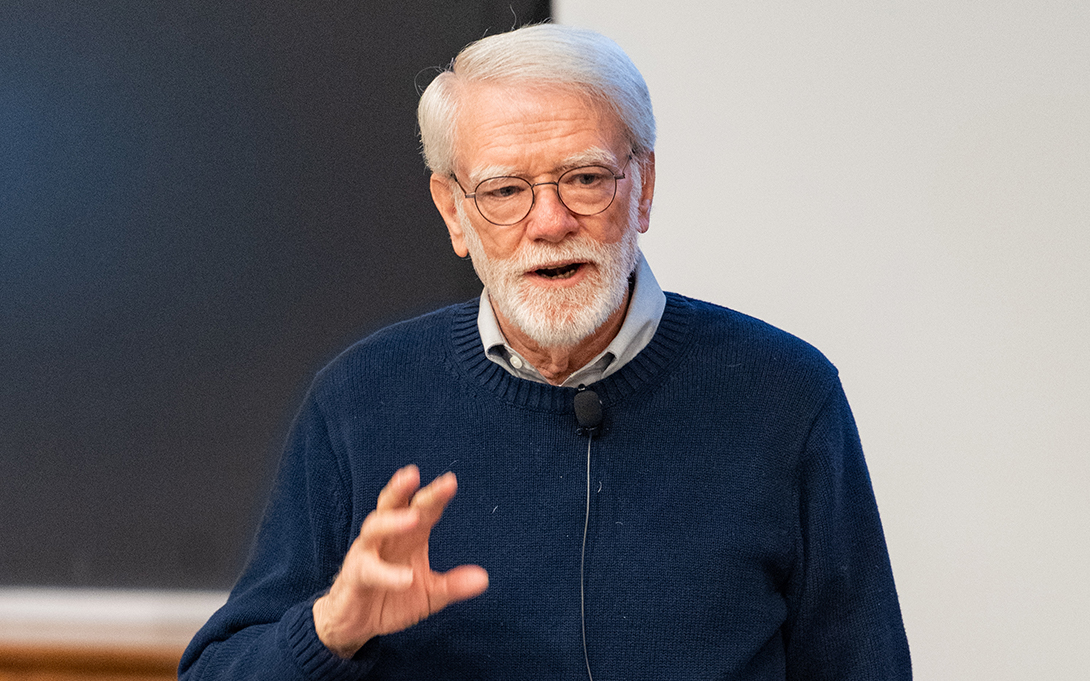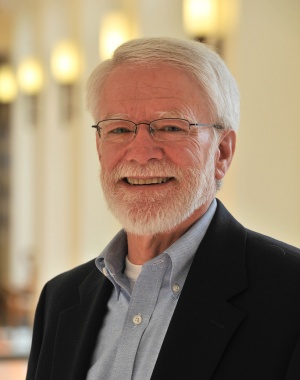
John Chamberlin, Ford School professor emeritus of political science and public policy, describes himself as a "redistricting junkie." Not unexpectedly, he possesses a keen interest in and understanding of the efforts under way to develop Michigan's new independent redistricting system.
Even though he claims to be "giving retirement a try, seven years after officially retiring," he's remained engaged: During the 2019-20 school year, he directed a student research project focused on "communities of interest" in the redistricting system.
Chamberlin, a faculty affiliate of the Center for Local, State, and Urban Policy (CLOSUP) at the Ford School, moderates a webinar on February 25 titled "The next big thing: Redistricting in Michigan and the role of communities of interest."
Below, he shares his expectations of some of panel's discussion, as well as other thoughts about the election system and ways to improve it.
What is important for people to know about the redistricting effort and where things stand with the commission? I know it's early but the process must move with some dispatch.
The Michigan Independent Citizens Redistricting Commission is off to a somewhat slow start. This is the first time through the new process so everything has to be organized from scratch.
The fact that in-person meetings are not possible because of the pandemic adds an additional hurdle, but the commission is meeting regularly. Its meetings are open and transparent and its website contains agendas, recordings of the meetings and comments from the public. It has hired an executive director, a director of communications and outreach, a general counsel and it will soon select a geographic information system/mapping consultant and a counsel with expertise on the Voting Rights Act.
The next big step in the commission's work involves holding at least 10 public hearings (which will very likely be held virtually) to hear from members of the public—particularly from communities of interest—about what they would like their future districts to look like. Since the concept of a community of interest is new to Michigan and will not be well-understood, considerable outreach by the commission and external organizations will be necessary to encourage and facilitate public participation. The current timeline forecasts these hearings occurring in May and June.
The recent announcement that the census data will not be released until late September presents a significant challenge, since the (Michigan) Constitution requires that the public have 45 days to comment on the final set of plans the commission will be selecting from. Since the constitution requires that final decisions be made by Nov. 1, some modifications in these requirements will need to be made. This will require initial efforts to draw potential maps using data from the 2010 Census or more recent estimates of population. When the final census data are available, preliminary maps will need to be fine-tuned.
Can you explain communities of interest (COI) and their importance to the average citizen not steeped in this?
The new process is "bottom-up" (arising from open participation by citizens) not "top-down" (being handed down by parties/politicians meeting behind closed doors) as in the past.
One of highest ranking redistricting criteria assigns a key role to the testimony of COIs. The notion of a COI is a means for getting citizens to think about what matters to their communities and how they would like future districts (and their relationship to their representatives) to look.
There is no authoritative definition of a COI. A good working definition comes from CLOSUP: "We think of a COI as a group of people in a specific geographic area who share common interests (such as economic, historic, cultural or other bonds) that are linked to public policy issues that may be affected by legislation." COIs can inform the MICRC about the bonds their members share and how they would like their community to be reflected in new legislative districts. In most cases, they will wish to have their community be kept intact in new districts because that will facilitate effective communication between representatives and constituents and enable the COI to be an effective participant in legislative elections.
You have said the work of drawing districts is harder than even commission members might appreciate. How so?
Citizens who have not been involved in redistricting often don't have an appreciation that there are probably millions of maps of new districts that could be drawn. Redistricting is something that can't be solved by a computer algorithm (there are no answers in the back of the book for this problem).
There is a set of redistricting criteria that must be taken into account and they are often in tension with one another. It would be inappropriate for the commission to take the district maps from the last decade and use them as a starting point, since those maps were the result of a partisan gerrymander.
So the commission will have to develop potential maps from public testimony, census data and the redistricting criteria. This will require a great deal of interaction with experts and consultants who know about data, geographic information systems, and mapping software. And they will need to do this on a considerably compressed timeline.
Zooming out, are there other voting and/or election reforms you'd like to talk about? There has been much discussion during the recent election cycle about the electoral college. Using the example of the inherent difficulties of redistricting, do you see similar challenges to mending or ending the electoral college?
Most proposals for altering the status quo focus on the national popular vote (NPV). Amending the constitution to use the NPV is the most discussed option. The Interstate National Popular Compact, a compact among states that would require states that join the compact to cast their electoral votes for the national popular vote winner. The Compact does not require a constitutional amendment.
It's made considerable progress, having been adopted by states with 196 electoral votes; it would become effective when adopted by states with at least 270 electoral votes (i.e., a majority of the electoral votes). So far, it has been adopted only in Democratic states and there are concerns about its constitutionality.
My take is the national popular vote is not a compelling way to elect a president. It relies on the fact that if there are only two candidates, one will get a majority. Yet most of the advocates of shifting to the NPV just assume it's the right answer for all presidential elections. But if there are more than two, the NPV winner may not have majority support.
We see examples of this in state and local elections that use ranked choice voting (RCV). Since most elections use plurality voting, we don't find out about voters' second, third or beyond preferences. But there may be a candidate who is preferred by a majority to the NPV winner and the majority principle is more compelling than the plurality principle.
Elections that use RCV demonstrate this:
- Ann Arbor used ranked choice voting in its mayoral election in 1975. The Republican had the most votes, with the Democrat second, and the Human Rights Party candidate third. Under RCV, the HRP candidate was eliminated and her ballots were redistributed to her voters' second preference. That led to the Democrat being elected with a majority of the votes.
- Something similar happened in Maine's 2nd congressional district in 2018. The Republican got the most first place votes, followed by the Democrat and two Independents who finished third and fourth. When the Independents were eliminated, the Democrat won with a majority over the Republican.
Whether the Electoral College is changed, I believe the use of RCV will grow at the local and state level. New York City will be using RCV in the future. Some states have considered using them in primary elections (which often have a handful of candidates). Efforts are underway to change the laws of Michigan to allow RCV. A group of citizens in Ann Arbor has been working to allow RCV in local elections if state law allows.

